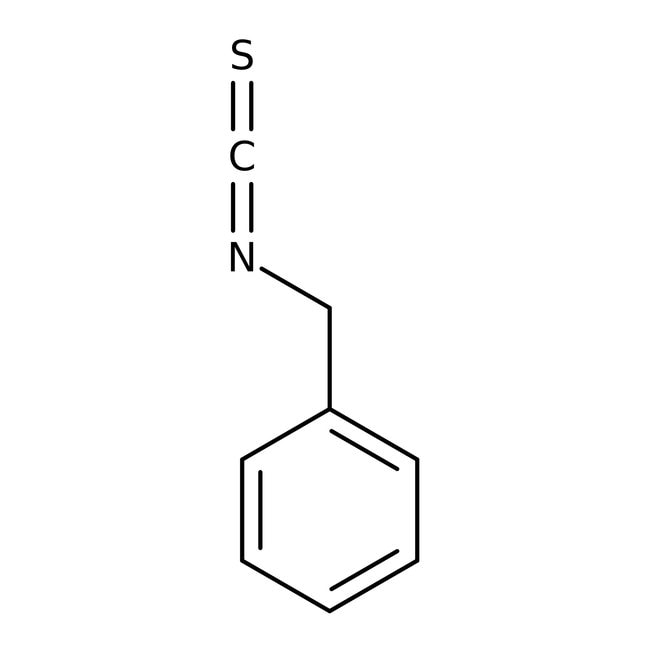Search Thermo Fisher Scientific
Isothiocyanate de benzyle, 98 %, Thermo Scientific Chemicals



Isothiocyanate de benzyle, 98 %, Thermo Scientific Chemicals
Identifiants chimiques
Spécifications
Description
This Thermo Scientific Chemicals brand product was originally part of the Alfa Aesar product portfolio. Some documentation and label information may refer to the legacy brand. The original Alfa Aesar product / item code or SKU reference has not changed as a part of the brand transition to Thermo Scientific Chemicals.
L’isothiocyanate de benzyle est utilisé dans une synthèse de 2-phénylpyrimidine-4-thiones à partir de benzoyl-acétonitrile. L’isothiocyanate de benzyle a été utilisé dans la préparation du S-(N-benzyletocarbamoyl)-L-glutathione et de la S-(N-benzyl thiocarbamoyl)-L-cystéine.
Solubilité
Il s’hydrolyse dans l’eau.
Remarques
Sensible à l’humidité. Conserver à l’écart des agents oxydants forts. Garder le récipient hermétiquement fermé. Stocker dans des conditions fraîches et sèches et dans des récipients bien scellés.
Figures
Documentation et téléchargements
Certificats
Foire aux questions (FAQ)
Citations et références
Sécurité et manipulation
Classification of the substance or mixture
CLP classification - Regulation(EC) No 1272/2008
Label Elements
Signal Word
Danger
Hazard Statements
H302 + H312 + H332 - Harmful if swallowed, in contact with skin or if inhaled
H315 - Causes skin irritation
H319 - Causes serious eye irritation
H334 - May cause allergy or asthma symptoms or breathing difficulties if inhaled
H335 - May cause respiratory irritation
Precautionary Statements
P280 - Wear protective gloves/protective clothing/eye protection/face protection
P301 + P330 + P331 - IF SWALLOWED: rinse mouth. Do NOT induce vomiting
P304 + P340 - IF INHALED: Remove person to fresh air and keep comfortable for breathing
P305 + P351 + P338 - IF IN EYES: Rinse cautiously with water for several minutes. Remove contact lenses, if present and easy to do. Continue rinsing
P310 - Immediately call a POISON CENTER or doctor/physician
P332 + P313 - If skin irritation occurs: Get medical advice/attention
P337 + P313 - If eye irritation persists: Get medical advice/attention